In the main menu, under Overviews, you can find the Requirements Overview. This is a relatively simple overview that shows all the requirements in your model in a table format. In contrast to a cross table, all objects and requirements are presented in columns.
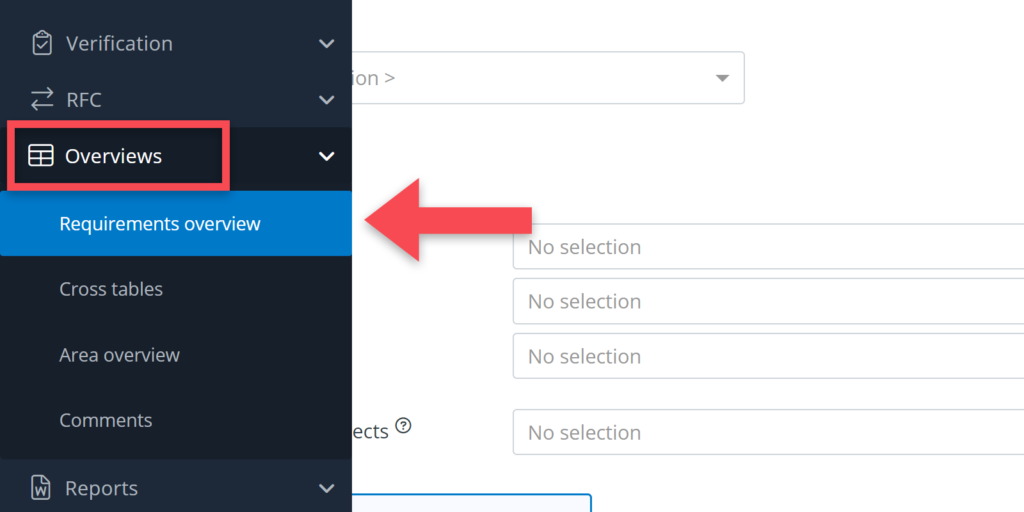
On the selection page, you can either select a predefined table definition (earlier created by either yourself or another project participant) or create a new table definition.
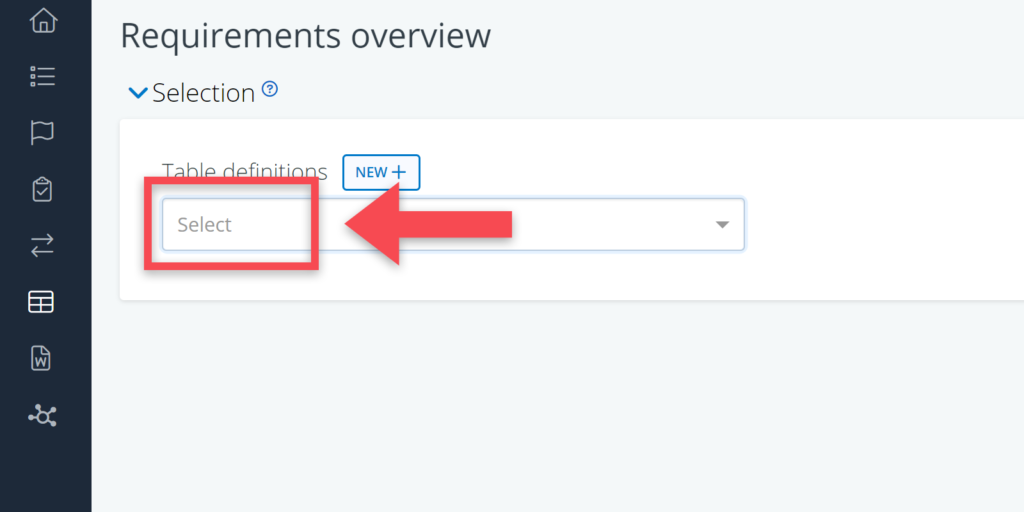
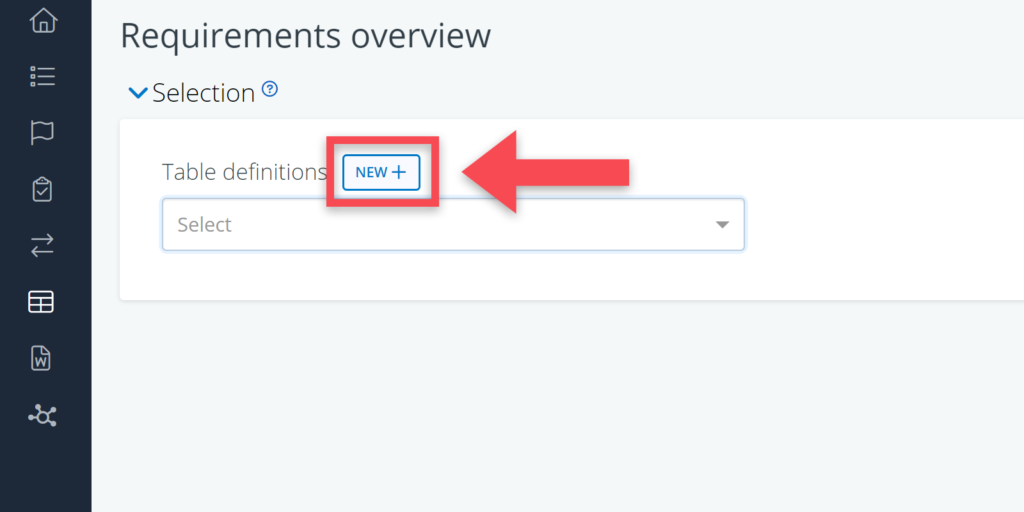
In this article, we’ll focus on how you can create a new table definition and explain the different data selection options.
Creating a new table definition
As said above, you must click on the button New to create a new table definition. By doing so, you will be presented with various selection possibilities for the requirements you wish to include in your table.
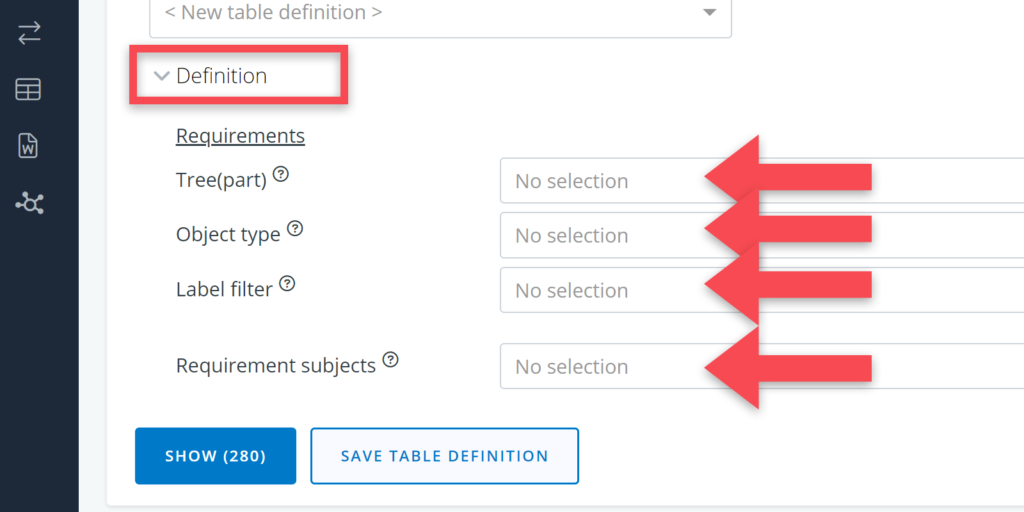
You can use the following selections for the requirements overview:
Tree(part)
Use this selection to select a particular tree (e.g. Spaces & locations tree or Systems & elements tree). In addition, you can use the Select tree part button to select a particular part of the selected tree (e.g. particular part of the building or a particular type of systems).
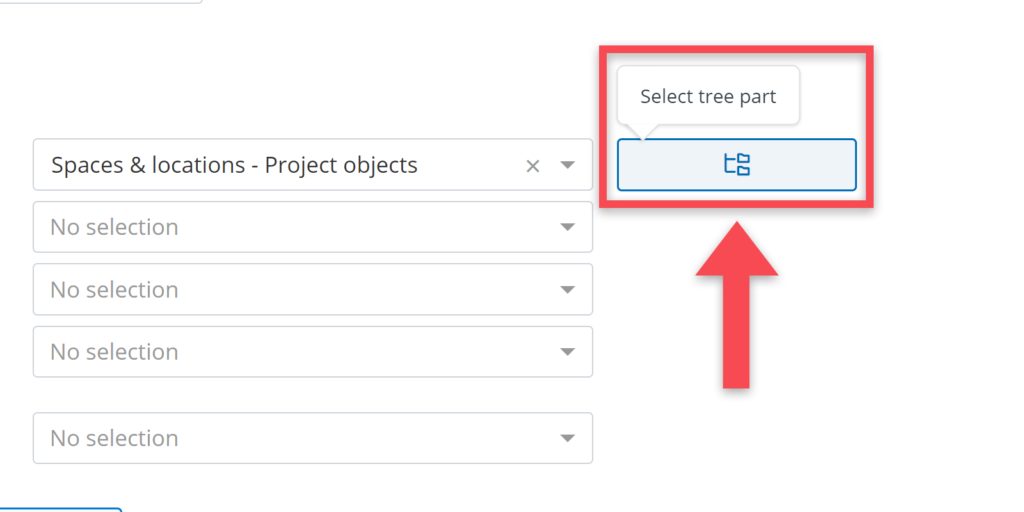
Object type
Trees can contain different types of objects (e.g. buildings, groups of spaces, spaces, outdoor spaces, …). Use this selection to focus on one particular type of object.
Label
Objects may be ‘tagged’ with labels. Use this selection if you only want to see objects with a particular label.
Instance of
This selection is only available when you have selected the Spaces & locations – project objects tree and when working with typicals. It allows you to select spaces or segments that are the instances of a particular typical object (e.g. meeting room or toilet space).
Requirement subject
With this selection you can refine your search results by choosing a specific requirement subject. For example, for the spaces tree, you can find requirement types like visual or acoustic comfort.
Viewing and saving your table definition
Once you have made your selections, you can click on the Show button to get to the table.
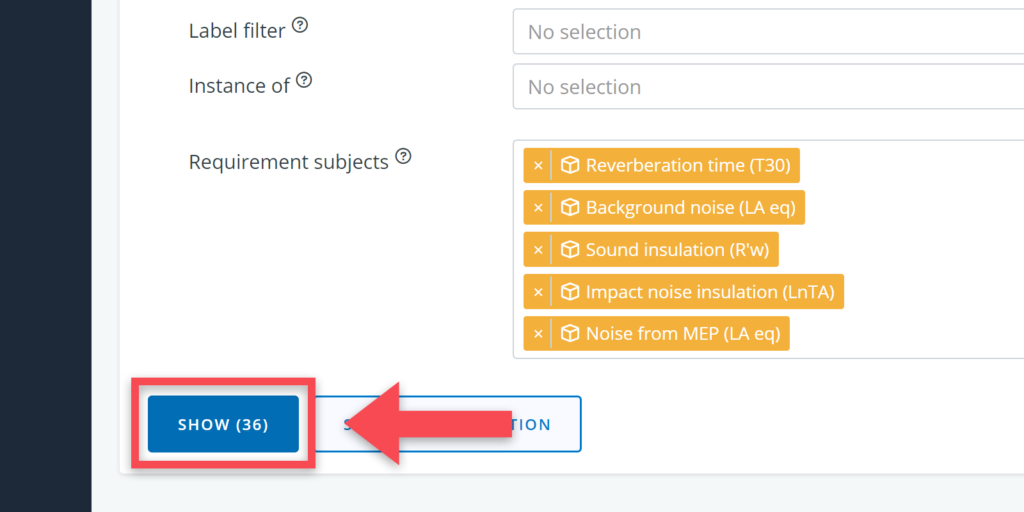
If you expect that you will need to use this table set-up more than once, then save it by clicking on the Save table definition button.
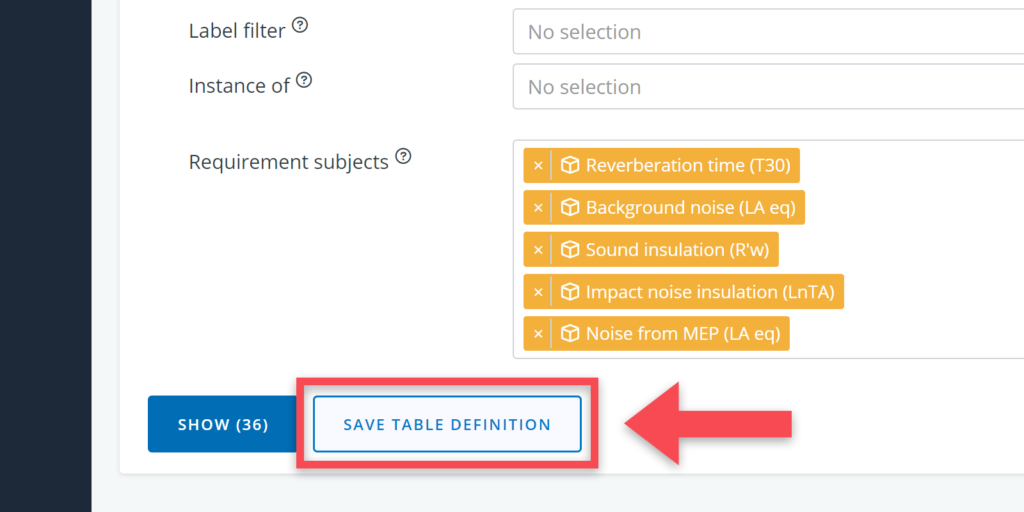
Table columns
Once you have clicked on Show, and are in the table itself, you will see quite a number of columns.

The default columns in the table are:
Object
This is the object to which a requirement belongs. Filtering in this column is very useful when looking for the requirements of a particular system or element (e.g. the HVAC system)
Requirement type
This column shows what type of requirement it concerns. Filtering in this column is very useful when you want to link verification information to a particular type of standard property (e.g. floor heights) or a particular type of relation (e.g. adjacency relations).
Related object
This column shows objects that are related to the objects in the first column. For example power sockets that need to be placed in rooms, or the interface relations between different systems.
Value/quantity
This concerns the value or quantity of a requirement (e.g. 20 m2 or 4 items in the case of power sockets).
ID
The unique identifier of a requirement.
Deviation (only relevant when working with typicals)
An indication whether a requirement is deviating from a typical’s requirement or not. This column is useful when you want to focus on deviations in your verification plan.
Useful actions, tips & tricks
Filtering
A filter icon is located at the top of each column in the requirements overview. With these filters you can filter on both requirements and verification data.

Sorting
The sorting icons are also located on top of each column. Click on the arrow pointing down to sort in ascending order, click on the arrow pointing up to sort in descending order.

Increasing column width
For columns that have a lot of info in them (e.g. text values or long names), it can be useful to increase the column width. This can be done in the column header by grabbing and moving the column’s border.

Increasing the display range
The display range concerns the number of rows that are being displayed on a page. This setting is located at the bottom of the page.You can choose between 10, 25, 50 or 100 rows per page.

Export the table to excel
For the purpose of communication, it is sometimes easy to have data in Excel. To get an Excel export of your table, just click on the icon, right next to the overview’s name.

Depending on the size of the overview, it may take some time to download the file. You can find the file in the downloads folder of your computer.
